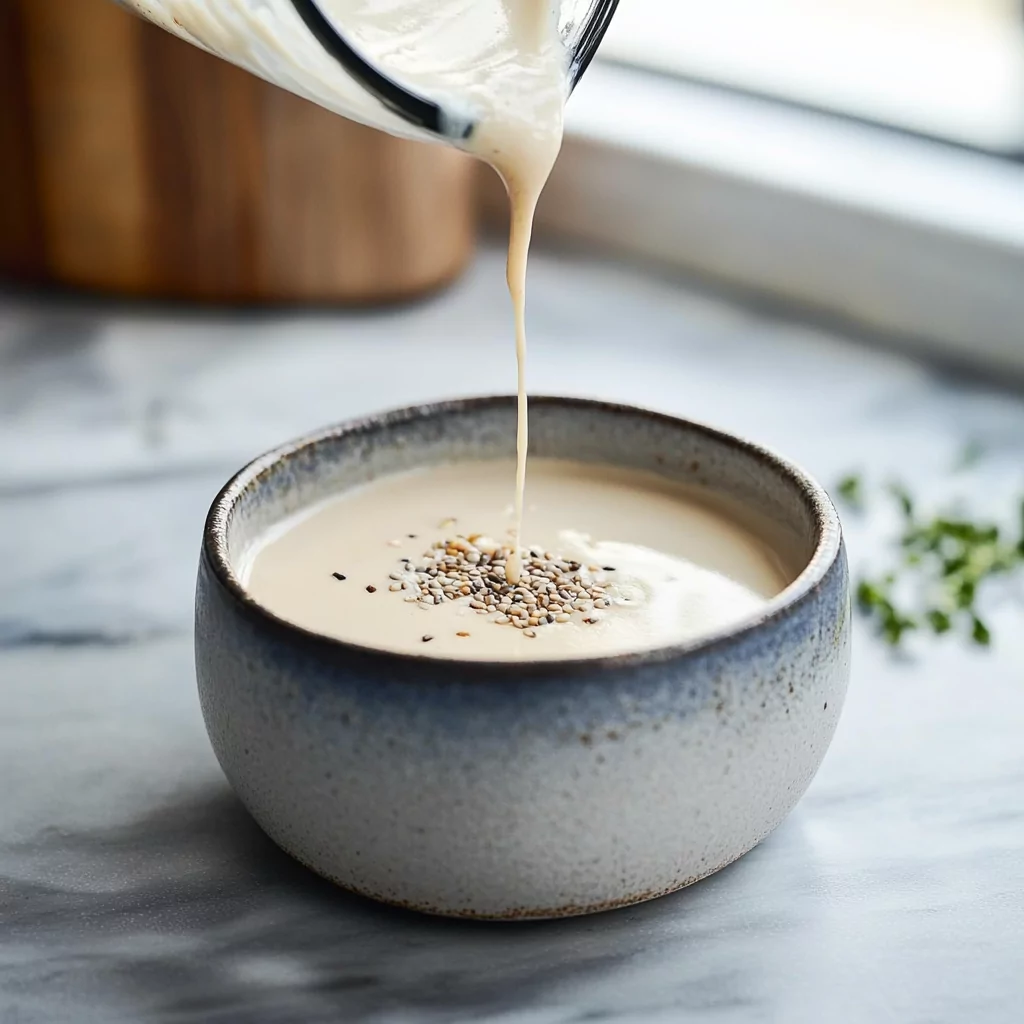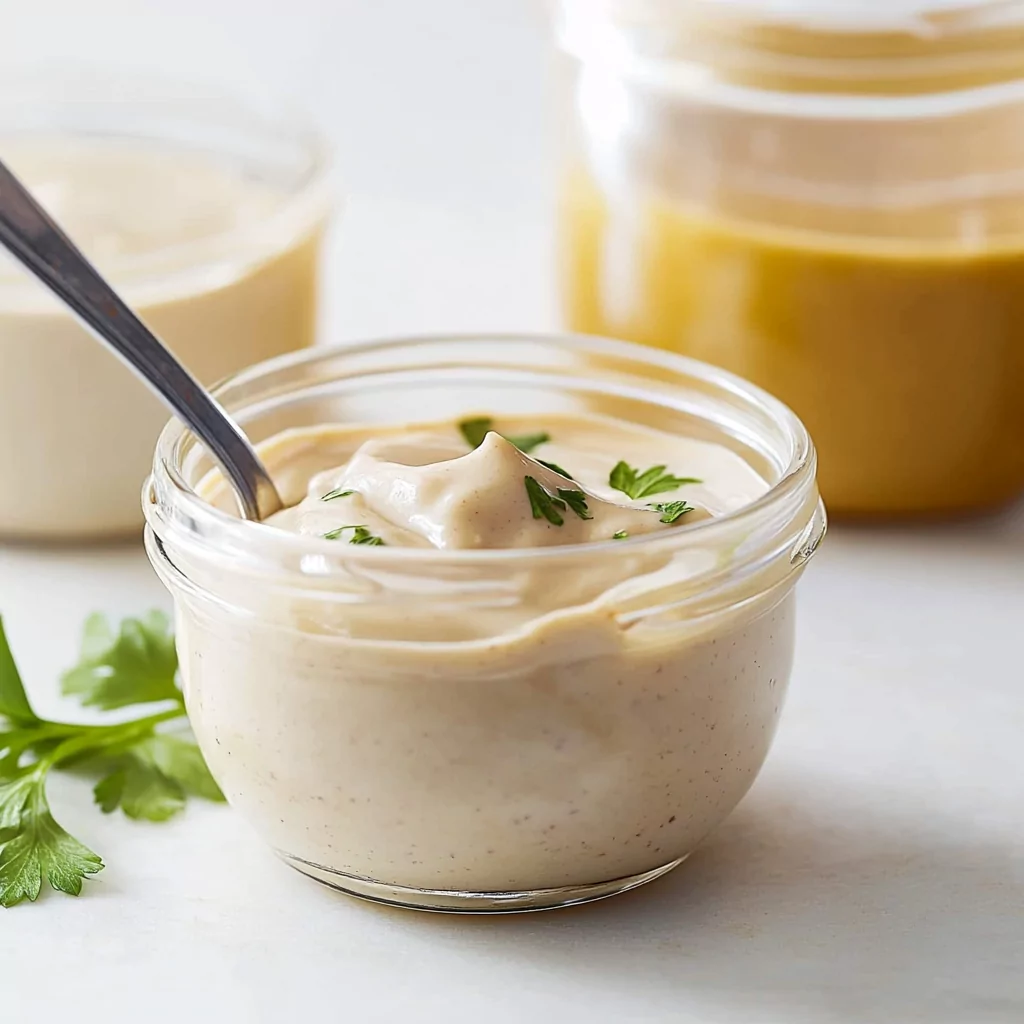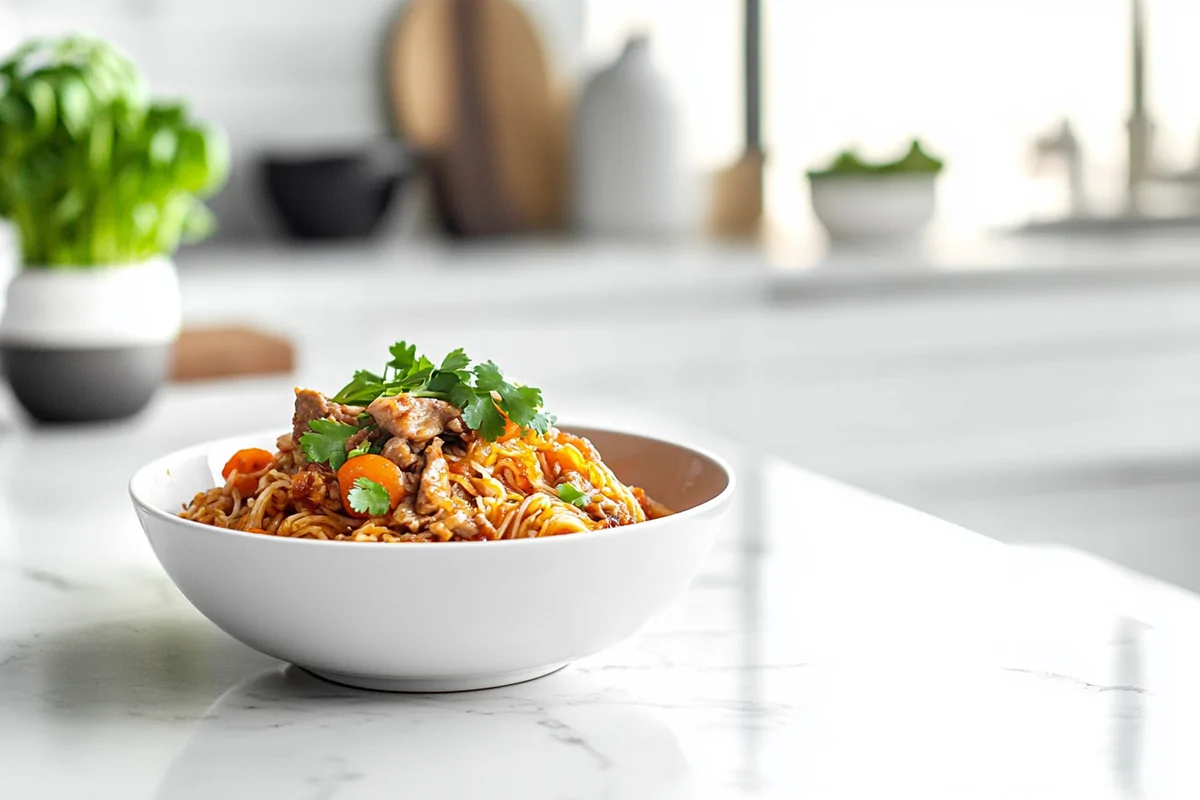If you’re looking to elevate your meals with a flavorful and versatile condiment, look no further than tahini sauce. This creamy blend made from ground sesame seeds brings a nutty richness to any dish. Whether you drizzle it over roasted vegetables, mix it into salads, or use it as a dip for fresh pita bread, tahini sauce adds depth and character that transforms ordinary meals into extraordinary culinary experiences.
In this article, we will walk you through the complete process of making tahini sauce from scratch. We’ll delve into the essential ingredients you’ll need to whip up this delightful condiment and guide you step-by-step through its preparation. Plus, we’ll share serving suggestions and storage tips so you can enjoy your homemade tahini sauce for days to come. With just a few simple ingredients and minimal effort, you can create a delicious tahini sauce that will impress your family and friends. Let’s dive into the world of tahini!
Main Ingredients
Sesame Seeds (1 cup)
Sesame seeds are the primary ingredient in tahini sauce. They provide a rich flavor and creamy texture when ground. You can use raw or toasted sesame seeds depending on the taste you desire. Toasted seeds offer a deeper nuttiness while raw seeds yield a lighter flavor profile. It’s important to choose high-quality seeds for the best results.
Olive Oil (2 tablespoons)
Olive oil adds smoothness and enhances the flavor of your tahini sauce. Extra virgin olive oil is recommended as it has a robust taste that complements the nuttiness of sesame seeds. The oil also helps achieve the desired consistency of the sauce while providing healthy fats.
Lemon Juice (3 tablespoons)
Freshly squeezed lemon juice is essential for balancing the richness of tahini with acidity. It brightens the overall flavor profile and adds a refreshing note to your sauce. Use ripe lemons for maximum juiciness and flavor.
Garlic (1 clove)
Garlic brings an aromatic punch to your tahini sauce. A single clove is usually enough to provide flavor without overwhelming the other ingredients. For those who prefer a milder taste, you can reduce the garlic or even omit it.
Water (as needed)
Water is used to adjust the consistency of your tahini sauce. Depending on how thick or thin you like your sauce, add water gradually until you reach your preferred texture. The amount may vary based on personal preference.
How to Prepare Tahini Sauce
Step 1: Toasting Sesame Seeds
Toasting sesame seeds enhances their natural oils and deepens their flavor profile significantly. Begin by heating a dry skillet over medium heat. Add your sesame seeds in an even layer, ensuring they don’t crowd each other too much; this allows them to toast evenly without burning. Stir frequently for about 5-7 minutes until they turn golden brown and fragrant—be vigilant as they can quickly go from perfectly toasted to burnt! Once done, remove them from heat immediately and let them cool slightly before grinding.
Step 2: Grinding Sesame Seeds
After allowing your toasted sesame seeds to cool down slightly, transfer them into a food processor or high-powered blender. Pulse them until they break down into a crumb-like texture; this should take about 30 seconds. Scrape down the sides of the bowl occasionally to ensure even processing. Continue blending until they transform into a smooth paste—this could take anywhere from 1-3 minutes depending on your machine’s power. If necessary, stop briefly to scrape down any remaining bits stuck on the sides.
Step 3: Adding Remaining Ingredients
Once you have achieved a smooth paste with your sesame seeds, it’s time to incorporate the remaining ingredients! Add olive oil, lemon juice, minced garlic (if using), and salt directly into the food processor with the sesame paste already prepared. Blend these together until fully combined; at this stage, you can assess if additional water is required for achieving desired consistency—if it seems too thick or clumpy after blending thoroughly.
Step 4: Adjusting Consistency
To achieve that perfect creamy texture you’ve envisioned for your tahini sauce requires some finesse! Gradually add water—one tablespoon at a time—while continuing to blend on low speed until everything emulsifies beautifully in harmony! Taste-testing along the way ensures that flavors are balanced according to personal preference; feel free to adjust lemon juice or salt levels if desired!

Serving and Storing Tips
Serving Suggestions
Tahini sauce is incredibly versatile! You can serve it as an accompaniment alongside fresh vegetables such as carrots or cucumbers for dipping purposes during gatherings or parties! It also pairs wonderfully drizzled over grain bowls featuring quinoa or farro topped off with roasted veggies; this adds richness while maintaining freshness altogether! For Mediterranean-inspired dishes like falafel wraps or shawarma plates—adding generous dollops elevates flavors immensely!
Storage Guidelines
When storing homemade tahini sauce properly ensures longevity without compromising quality! Transfer any leftover sauce into an airtight glass container right after preparing; this keeps out moisture while preventing unwanted odors from affecting its taste! Refrigeration is crucial since homemade sauces lack preservatives found in store-bought versions; typically remains usable within 5-7 days when stored correctly due diligence will help maintain optimal freshness throughout this period.
With these simple steps outlined above—from preparation through serving—you now possess all knowledge needed regarding crafting delectable homemade tahini sauces tailored perfectly towards any meal occasion! Enjoy experimenting with flavors while savoring every bite guilt-free knowing exactly what goes inside each jar created by hand!
Mistakes to Avoid
Using stale tahini
One of the most common mistakes people make when preparing tahini sauce is using stale tahini. Fresh tahini has a rich, nutty flavor that enhances the sauce’s overall taste. Over time, tahini can go rancid, losing its quality and flavor. Always check the expiration date on the jar and smell it before using. If it has an off or sour smell, it’s best to discard it and purchase a new jar. Additionally, store tahini in a cool, dark place to extend its shelf life. If you’ve opened the jar, consider refrigerating it after use. This will help maintain its quality for a longer period. Fresh ingredients lead to better-tasting sauces.
Skipping the lemon juice
Another mistake many make is skipping lemon juice in their tahini sauce recipe. Lemon juice not only adds acidity but also brightens up the flavors in your sauce. Omitting this crucial ingredient can result in a bland final product. The right amount of lemon juice balances the richness of tahini and adds freshness. Adjust the acidity according to your taste preference; some may enjoy more tartness while others prefer a milder flavor. Always start with small amounts and add more if needed. Remember, you can always add more lemon juice but cannot take it out once mixed in.
Not adjusting for thickness
Many chefs overlook the importance of adjusting for thickness when making tahini sauce. Depending on how you plan to use your sauce—whether as a dip or dressing—you might need different consistencies. If your tahini sauce is too thick, consider adding water gradually until you reach your desired texture. Conversely, if it’s too thin, you can thicken it by adding more tahini or even blending in some Greek yogurt for creaminess. Avoid making adjustments all at once; instead, do it gradually to prevent compromising the flavor.
Tips and Tricks
Experimenting with spices
To elevate your tahini sauce beyond its basic form, consider experimenting with various spices and herbs. While traditional recipes often call for garlic and salt, there are endless possibilities for customization. Add cumin for warmth or smoked paprika for depth of flavor. Fresh herbs like parsley or cilantro can brighten the taste profile significantly. Start by incorporating small amounts of your chosen spices and adjust according to your palate preferences. This experimentation not only enhances flavor but also allows you to tailor the sauce to complement different dishes beautifully.
Choosing high-quality ingredients
The quality of ingredients you select plays a significant role in your final product’s taste and texture when making tahini sauce. Opting for organic lemons or fresh garlic can make a noticeable difference compared to their conventional counterparts. Additionally, choose high-quality sesame seeds or pre-made tahini that is smooth and creamy without too many additives or preservatives. When every ingredient shines through in flavor and quality, your tahini sauce will be far superior.
Properly combining ingredients
Properly combining your ingredients is essential for achieving a smooth and well-blended tahini sauce. Begin by mixing tahini with water before adding other ingredients like lemon juice and garlic; this helps create a cohesive mixture without clumps forming later on. Use a whisk or fork initially, then switch to a blender if you’re looking for an ultra-smooth consistency. Take your time during this process; rushing may lead to uneven textures that detract from the overall experience.
Suggestions for Tahini Sauce
Pairing with fresh vegetables
Tahini sauce pairs exceptionally well with fresh vegetables, making it an ideal dip or dressing option! Consider serving cut carrots, cucumbers, bell peppers, or celery sticks alongside your homemade tahini sauce as an appetizer or snack option at gatherings with family and friends! For added flair—drizzle some olive oil over the veggies before serving! This not only enhances presentation but also enriches flavor profiles when enjoyed together!
Using it as a salad dressing
Another fantastic way to enjoy tahini sauce is by using it as a salad dressing! Its creamy texture coats leafy greens beautifully while contributing nutritional benefits from sesame seeds! To create an easy salad dressing—combine equal parts water (or broth), lemon juice & tahini! Whisk until smooth before drizzling over salads featuring roasted veggies & grains like quinoa! Not only does this add depth but transforms ordinary salads into flavorful meals!
Incorporating into grain bowls
Grain bowls are another excellent vehicle for showcasing delicious homemade tahini sauces! Layer cooked grains like farro or brown rice at the base before adding roasted vegetables such as sweet potatoes & broccoli along with proteins like chickpeas or grilled chicken! Finally—liberally drizzle with prepared Tahani Sauce just before serving! This combination creates wholesome meals packed full of flavors that are both satisfying & nourishing! Enjoy experimenting with various combinations until finding one that resonates most with personal tastes!
FAQs for Tahini sauce:
What is Tahini Sauce Made Of?
Tahini sauce is a creamy condiment primarily made from ground sesame seeds. To create this rich and flavorful sauce, toasted sesame seeds are blended until they form a smooth paste. This paste can be thinned out with water, lemon juice, garlic, and salt to enhance its flavor. The beauty of tahini sauce lies in its versatility; it can be used as a dip, dressing, or marinade. Some variations may include additional ingredients like olive oil or spices to give it a unique twist. Not only does tahini add depth to dishes, but it also provides a dose of healthy fats and essential nutrients, making it a nutritious addition to various meals.
How Do You Use Tahini Sauce?
Tahini sauce is incredibly versatile and can enhance many dishes. It works beautifully as a dip for fresh vegetables or pita bread. Drizzle it over salads for an extra kick or use it as a dressing by mixing in some water and lemon juice. You can also incorporate tahini into grain bowls or drizzle it over roasted vegetables to elevate their flavor. Additionally, tahini pairs well with grilled meats and can be used in sauces or marinades. The nutty flavor profile complements both savory and sweet dishes alike, making it an excellent choice for innovative culinary creations.
Can Tahini Sauce Be Made Ahead of Time?
Yes, you can definitely prepare tahini sauce ahead of time! In fact, making it in advance allows the flavors to meld beautifully, enhancing the overall taste. Store your homemade tahini sauce in an airtight container in the refrigerator for up to one week. If the sauce thickens while stored, simply stir in a bit of water or lemon juice before using it again. This makes tahini a great option for meal prep; you can whip up a batch at the start of the week and use it throughout various meals without any hassle.
Is Tahini Sauce Healthy?
Tahini sauce is considered healthy due to its nutritional profile. It is made from sesame seeds, which are rich in healthy fats, protein, and essential vitamins and minerals like calcium and magnesium. The presence of antioxidants in tahini may help combat oxidative stress in the body. Additionally, the healthy fats found in tahini can promote heart health when consumed as part of a balanced diet. However, moderation is key since tahini is calorie-dense. Incorporating tahini into your meals can offer both flavor and nutrition without compromising your health goals.
How Long Does Tahini Sauce Last?
When stored properly, homemade tahini sauce can last up to one week in the refrigerator. Ensure that you use an airtight container to keep it fresh and prevent any contamination from other foods in your fridge. If you notice any changes in color or smell after this period, it’s best to discard the sauce just to be safe. If you want to keep it longer than one week, consider freezing portions of tahini sauce in ice cube trays; this allows you to thaw only what you need later on while maintaining its freshness.
Can You Substitute Tahini Sauce?
If you find yourself without tahini sauce on hand, several substitutes may work depending on your recipe’s needs. One popular alternative is peanut butter; while it has a different flavor profile, its creaminess makes it suitable for dressings or dips. Almond butter could also serve as another substitute due to its similar consistency and nutty taste. For those looking for a nut-free option, sunflower seed butter offers a comparable texture without allergens associated with nuts. Keep in mind that these substitutes will alter the overall flavor slightly but can still provide delicious results.
Conclusion for Tahini sauce:
In summary, tahini sauce is not only versatile but also packed with nutrition that enhances various dishes—from dips to dressings and marinades. Its primary ingredients—ground sesame seeds—provide healthy fats along with essential vitamins and minerals that contribute positively to your diet. The ability to prepare tahini ahead of time adds convenience for meal prepping enthusiasts while allowing flavors to develop over time.
Additionally, understanding how long tahini lasts helps minimize food waste when stored correctly in an airtight container within your fridge. Substituting tahini with alternatives like peanut butter or sunflower seed butter opens doors for those who might have dietary restrictions but still wish to enjoy creamy sauces or dips. Overall, incorporating tahini into your culinary repertoire can elevate meals with its unique flavor profile while supporting a balanced lifestyle.
Print
Tahini sauce
- Prep Time: 10 minutes
- Cook Time: 7 minutes
- Total Time: 17 minutes
Description
Elevate your dishes with this creamy tahini sauce, a versatile condiment that adds a rich, nutty flavor to salads, dips, and more. Made from high-quality sesame seeds, olive oil, fresh lemon juice, and garlic, this sauce is not only delicious but also incredibly easy to whip up at home. Perfect for drizzling over roasted veggies or serving alongside fresh pita bread, this tahini sauce will become a staple in your kitchen. Plus, it’s vegan and packed with nutrients!
Ingredients
- – 1 cup sesame seeds
- – 2 tablespoons extra virgin olive oil
- – 3 tablespoons freshly squeezed lemon juice
- – 1 clove garlic (optional)
- – Water (as needed)
- – Salt (to taste)
Instructions
1. Toast sesame seeds in a dry skillet over medium heat for 5-7 minutes until golden brown.
2. Allow the seeds to cool slightly before transferring them to a food processor. Blend until they form a smooth paste (about 1-3 minutes).
3. Add olive oil, lemon juice, garlic, and salt into the processor. Blend until well combined.
4. Gradually add water one tablespoon at a time until you reach your desired consistency.
Notes
– For added flavor, experiment with spices like cumin or smoked paprika.
– Store any leftovers in an airtight container in the refrigerator for up to one week.






Leave a Comment